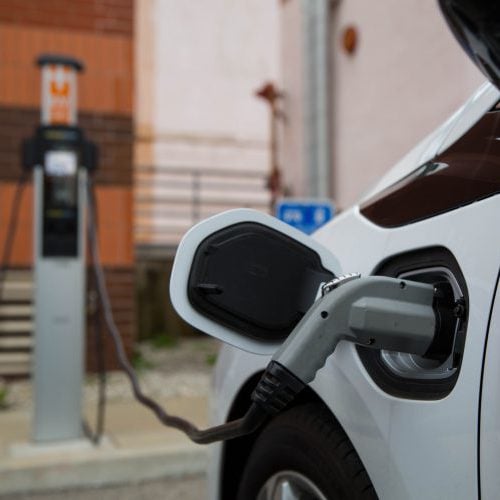Cars and Drivers
How Much Cheaper Are Electric Cars to Operate?

Published:
Last Updated:

Depending on where you live, the cost of driving a gasoline-powered vehicle could be more than double (or even triple in a few cases) what it would cost to operate an all-electric vehicle.
Even in states where gasoline prices are high, consumers spend between 34% and nearly 60% more to operate gasoline-powered vehicles.
Researchers Michael Sivak and Brandon Schoettle at the University of Michigan’s Sustainable Worldwide Transportation group have calculated the fuel cost of operating a gasoline-powered vehicle compared to an all-electric vehicle in each of the 50 states and the District of Columbia.
They used the AAA average price of a gallon of regular fuel in each state and compared that to the cost of a kilowatt-hour (k/Wh). They then calculated the required fuel economy rating for gasoline vehicles that would allow them to meet the cost of an electric vehicle. The calculations are based on an average 11,443 miles driven in a year (2015, the most recent year for which full data are available).
The national average fuel cost to operate a gasoline-powered car for a year is $1,117, compared to $485 to operate an all-electric vehicle. In order to match the cost of electricity, a gasoline-powered vehicle would have to reach a fuel economy rating of 57.6 miles per gallon (mpg).
Here are the five states with the highest annual fuel costs for a gasoline-powered car, along with the annual cost of an all-electric vehicle and the fuel economy rating in mpg that the gasoline-powered vehicle would need to achieve in order to meet the fuel cost for an electric vehicle:
A couple of comments: First, Washington and Oregon generate more than half of their electricity from hydropower, the cheapest source on the planet once construction costs are fully paid. Second, Hawaii uses petroleum to generate most of its electricity, the highest-cost source of electric power on the planet.
Here are the five states with the lowest annual fuel costs for a gasoline-powered car, along with similar data:
In this list, even though gasoline costs are low, electricity costs are lower enough that gasoline-powered vehicles would need at least to double current fuel economy ratings to match the fuel costs of operating a vehicle.
In 2012, the Obama administration and automakers who sell vehicles in the United States agreed to a fleet average fuel efficiency rating in the range of 40.3 to 41.0 mpg by model year 2021, rising to 54.5 mpg by 2025. By the end of March 2018, the Trump Administration is scheduled to release a proposed rule on fuel economy standards to cover model years 2022 through 2025 that would rollback those targets.
Automakers have been pushing hard to lower the standards to account for consumers’ preference for less efficient sport utility vehicles and pickups that get much lower fuel economy ratings than do passenger cars. The argument has been that the market should decide what vehicles consumers want to buy and that the automakers should just “give the customers what they want.”
Maybe. But automakers, particularly the Detroit Three, make princely margins on pickups, SUVs and crossovers and would like to continue doing so. One way to do that is to keep the cost of gasoline relatively low by not boosting the federal gasoline tax, which has been stuck at $0.185 per gallon since 1993. Lifting the fuel-economy targets is another way of boosting sales of larger, less fuel-efficient vehicles.
So why is the global auto industry, including U.S. automakers, vowing to electrify their fleets of new cars over the next several years? Primarily because most countries have adopted or will be adopting stricter emissions rules to meet requirements of the global climate agreement that President Trump jettisoned. And automakers are pretty confident that U.S. policy will change direction again.
Take the quiz below to get matched with a financial advisor today.
Each advisor has been vetted by SmartAsset and is held to a fiduciary standard to act in your best interests.
Here’s how it works:
1. Answer SmartAsset advisor match quiz
2. Review your pre-screened matches at your leisure. Check out the
advisors’ profiles.
3. Speak with advisors at no cost to you. Have an introductory call on the phone or introduction in person and choose whom to work with in the future
Take the retirement quiz right here.
Thank you for reading! Have some feedback for us?
Contact the 24/7 Wall St. editorial team.